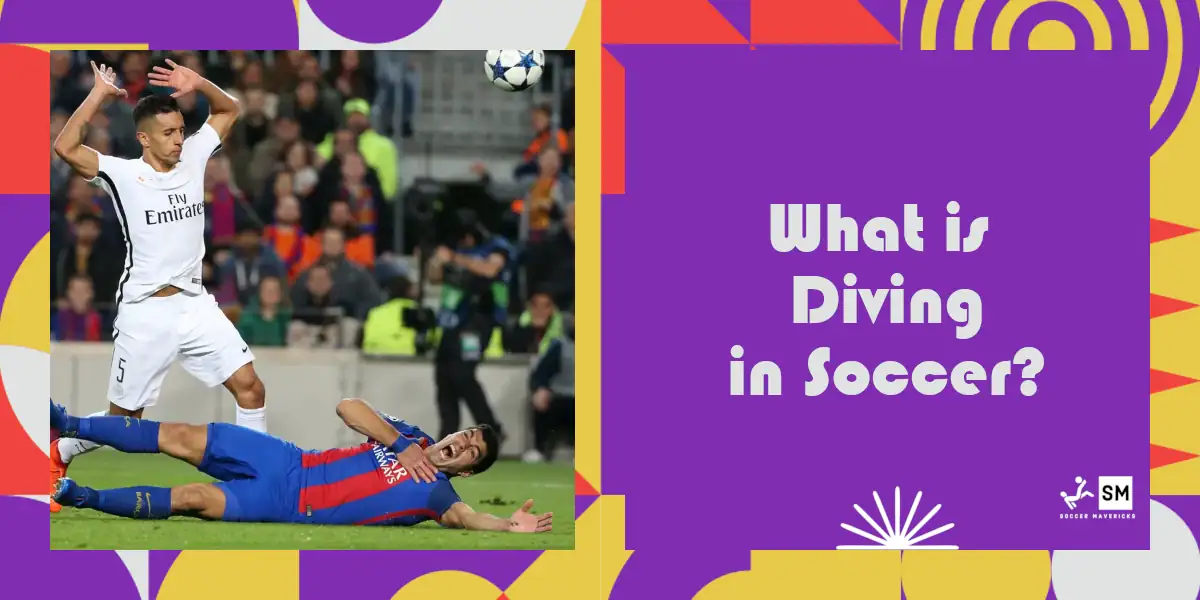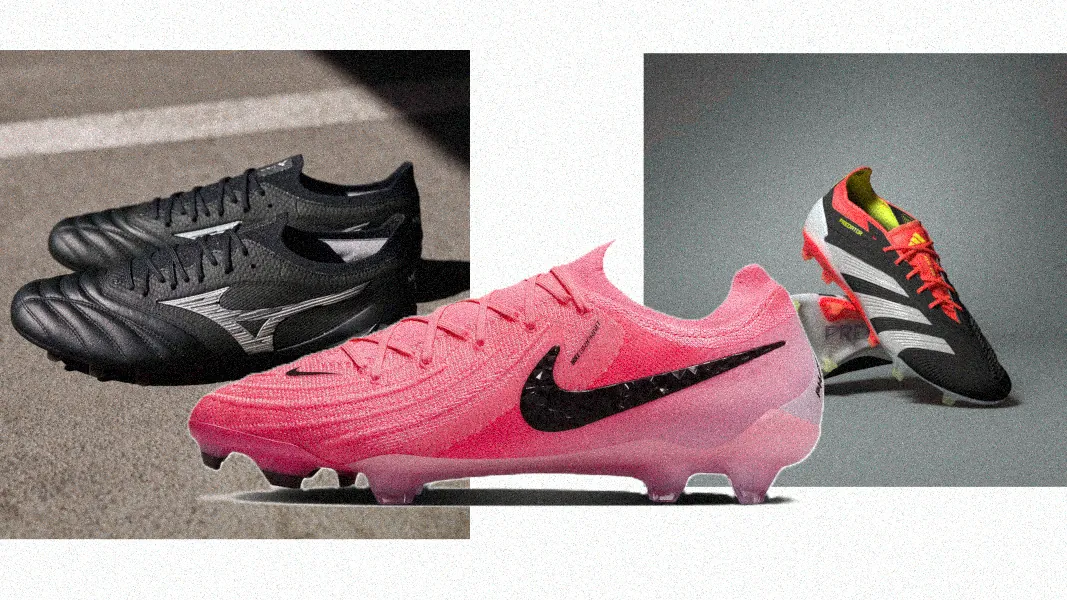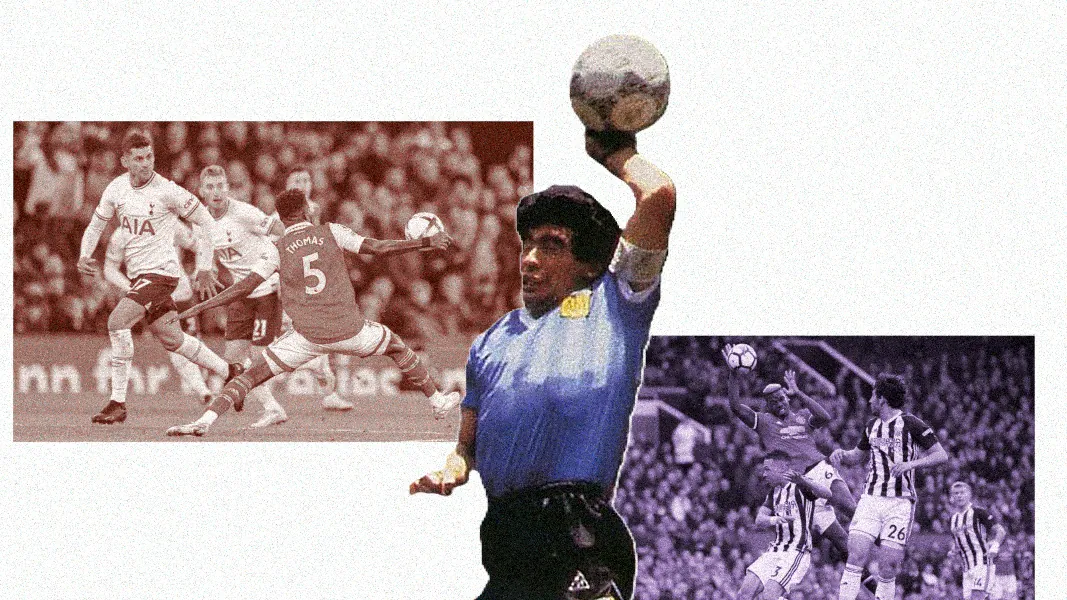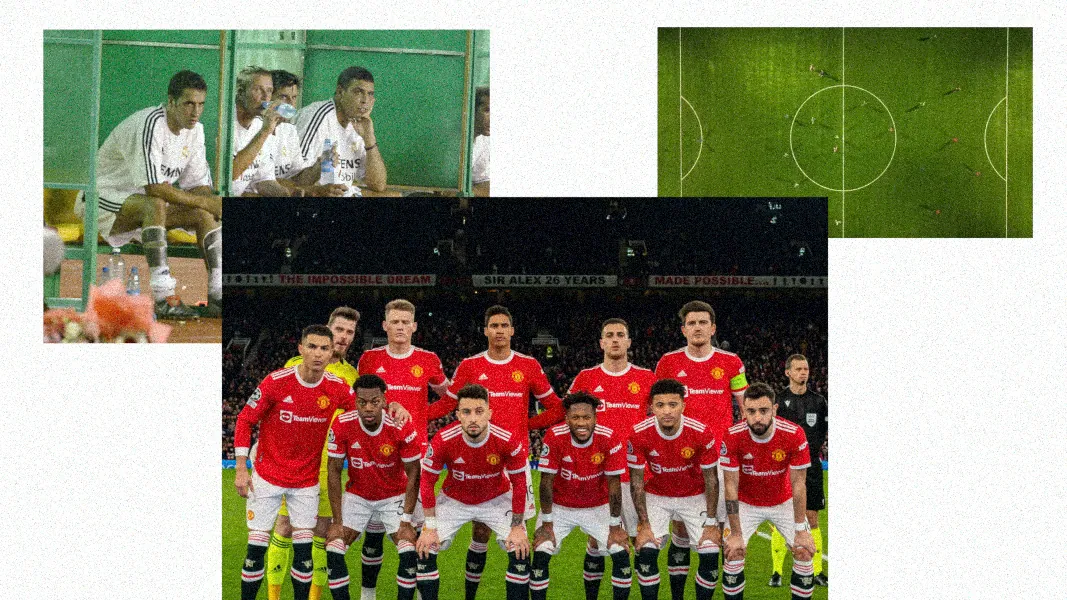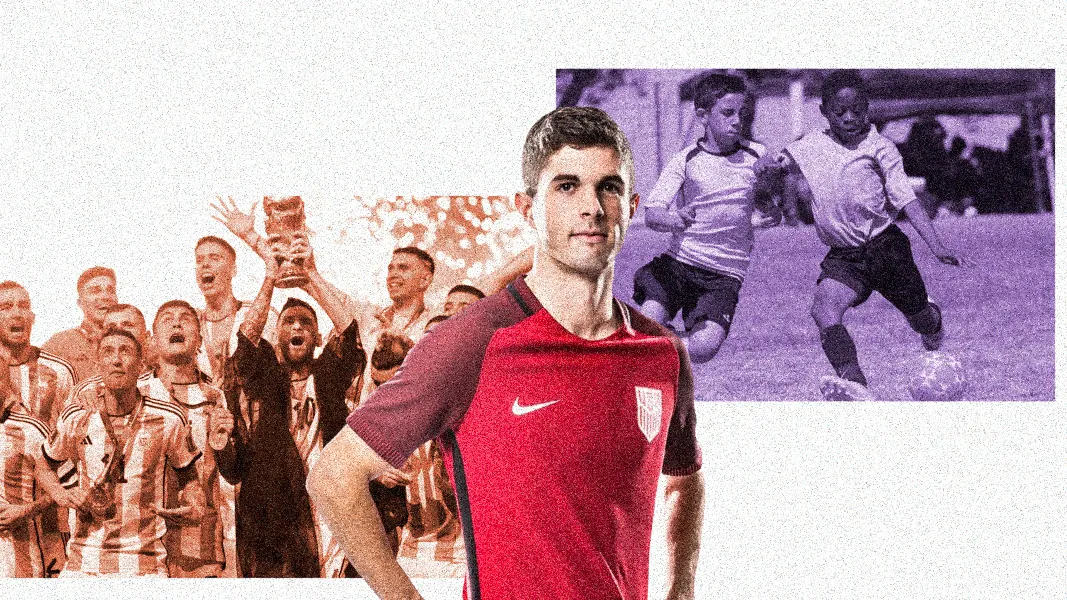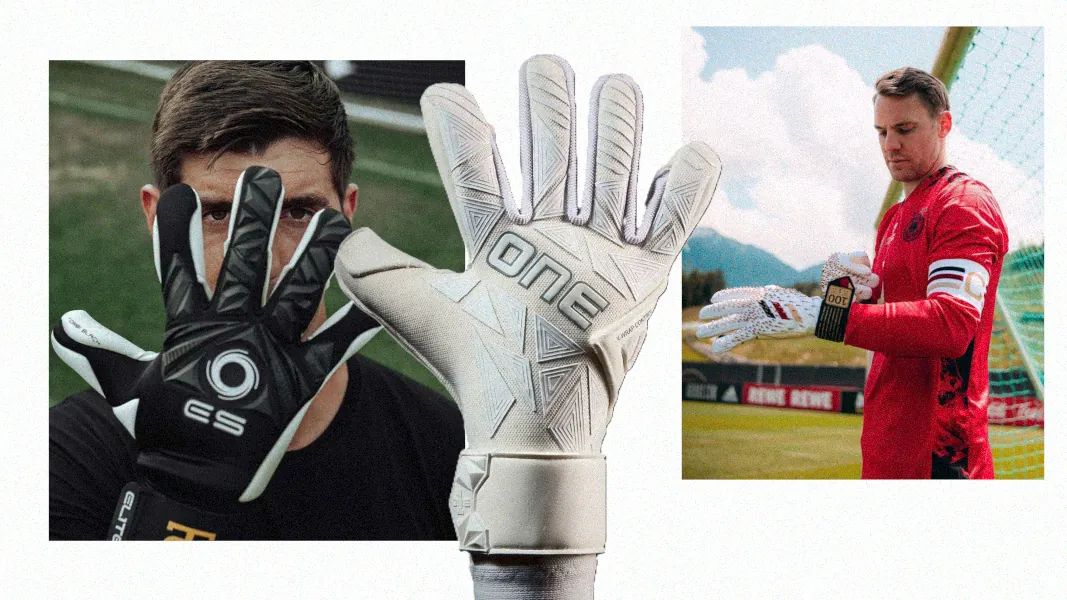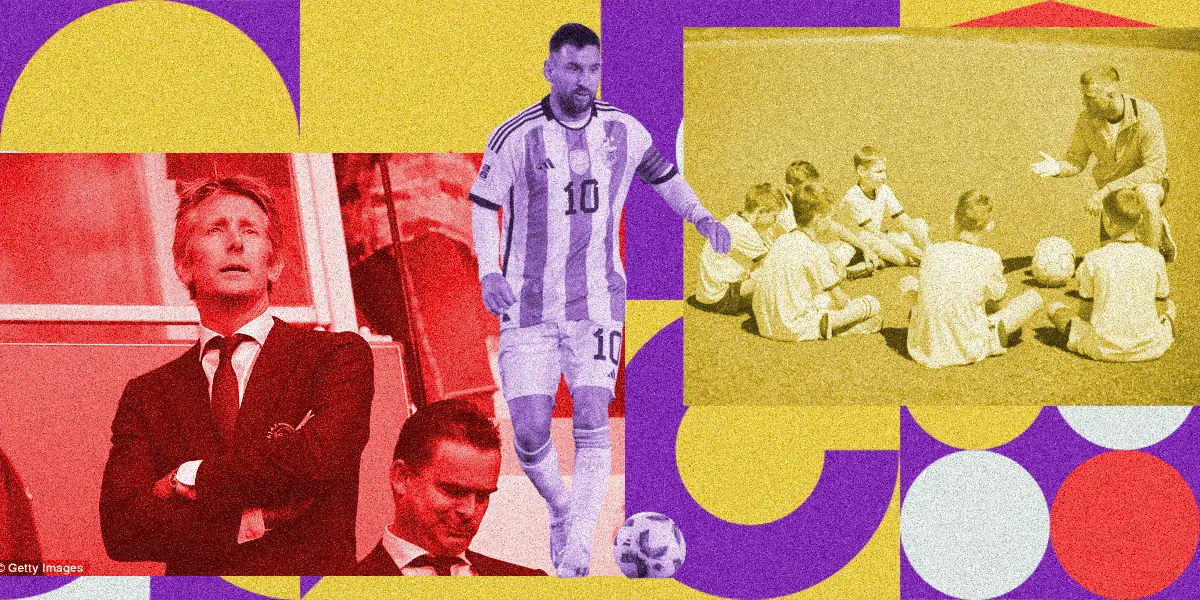In this post, I’ll tell you ALL ABOUT the dark art of diving in soccer.
Let’s start with a quick definition of diving.
Diving in soccer is the act of a player falling to the ground and exaggerating or feigning injury. Players do it to deceive the referee into believing a foul was committed against them.
The team then gains an unfair advantage. It could be earning a free kick, a penalty kick, or getting an opposing player carded.
Needless to say, diving has become a major problem in soccer.
We’ll talk all about it and more in this article. In this post, you’ll learn about:
- The definition of diving in soccer
- The motivations behind diving
- How to identify a dive in soccer
- The measures taken to combat diving
- And much more!
So, if you’re looking to learn everything about the act of diving in soccer, you’re in the right place.
Let’s dive right in!
What is Diving in Soccer?
Embed from Getty ImagesOkay, let’s start with a detailed explanation of diving in soccer.
In simple terms, diving is a deliberate act of deception. A diving player pretends to be fouled or injured more severely than they were.
This involves actions like falling, holding body parts in pain, and writhing on the ground.
But why do players dive? What’s the purpose?
The main goal of diving is to trick the referee into making a decision that benefits their team.
This could mean:
- Winning a free kick
- Winning a penalty kick, or
- Getting an opponent penalized
Difference Between Diving and Legitimate Falls
| Diving | Legitimate Falls |
|---|---|
| Intentional | Unintentional |
| Exaggerated reaction | Minimal or natural reaction |
| Inconsistency in reaction | Consistency in reaction |
The main difference between diving and a legitimate fall is the intent of the player.
A diving player exaggerates contact or invents it entirely. They fall to the ground in an attempt to portray a more serious situation than what happened.
But a legitimate fall is natural consequence of genuine contact with another player, loss of balance, or tripping over an uneven surface.
A diving player also exaggerates their reaction. The player writhes on the ground and clutches certain body parts (often unrelated to the contact). They might also display excessive pain compared to the actual situation.
Meanwhile, a fouled player may show pain but doesn’t exaggerate their reaction. They usually try to regain their balance and continue playing.
Finally, a diving player’s reaction might be inconsistent with the severity of the actual contact. They might hold different body parts depending on where the referee is looking.
The player’s reaction to an actual fall is consistent with the severity of the actual contact or incident.
Common Situations Where Diving Occurs
A player can dive anywhere on the pitch. But there are situations where diving presents an extra incentive.
Let’s take a look at those scenarios.
1. Inside the Penalty Area
There’s a high chance of scoring a goal through a penalty kick. This makes diving especially tempting within the penalty area.
So, players go down inside the penalty area hoping for a penalty call. Even after minimal contact or without any contact at all.
2. Winning a Free Kick
Players might dive to win a free kick in a dangerous position close to goal. This creates a scoring threat through a direct free kick or set-piece play.
That’s why, diving is also common near the edge of the penalty area.
3. Getting an Opponent Carded
Sometimes, players dive to provoke a yellow or even red card for an opposing player. A red card means that the team gains a numerical advantage on the field.
This is a strategic use of diving. It is often used when a team feels the opponent poses a significant threat.
4. Time-wasting
Winning a free kick through a dive can also help in wasting time. In the later stages of a close game, particularly when leading, players might dive to waste time.
The referee stops the play if a team commits a foul. This allows the diving team to waste time before restarting play.
It can also disrupt the opponent team’s momentum.
Why Do Soccer Players Dive?
Why do soccer players put their reputations on the line to dive? Is there any benefit to it?
Well, as it turns out, there are. But only if the referee is deceived.
Let’s look at what motivates soccer players to dive.
1. Seeking an Advantage
Some players dive to gain an unfair advantage for their team. By faking a foul, they hope to secure free kicks, penalties, or get opponents booked.
2. Gamesmanship
Diving is seen as a form of gamesmanship, where players use tactics to disrupt the flow of the game or waste time.
3. Putting Pressure on Referees
Diving puts pressure on referees to make quick decisions. This can lead to mistakes and influence the game’s outcome.
4. Psychological Warfare
Diving can mentally affect opponents and referees, causing frustration and distraction.
5. Strategic Faking
Players may dive in crucial moments of the match to swing the outcome in their favor.
The Negative Impact of Diving on Soccer
As you might have guessed, diving is considered a problem in soccer. It negatively impacts the image of the sport in several ways.
Erodes trust and respect
One of the biggest negatives of diving is that it undermines the integrity of the game. It breeds distrust among fans, players, and officials.
When players fake injuries, it tarnishes the image of soccer as a genuine competition.
Discourages fair play and sportsmanship
Diving also sets a negative example for aspiring players. It promotes cheating and deception as acceptable tactics.
This can have a detrimental effect on young players. They might see diving normalized and emulate it in their own games.
Creates controversy and undermines officiating
Diving often leads to controversy and heated arguments.
Referees get the sharp end of the stick in such situations as their judgment is often questioned.
This creates negativity around the officiating and casts doubt on the legitimacy of the results.
Frustrates fans and diminishes the enjoyment of the game
Frequent instances of diving can be frustrating and irritating for fans.
This diminishes the enjoyment of watching the sport and alienates viewers. It can further lead to a decrease in soccer’s popularity and appeal.
Damages the reputation of the sport and players
Diving also harms the image of soccer. It portrays soccer as a sport where unethical behavior is tolerated.
Additionally, players who engage in frequent diving risk damaging their reputations. They face criticism which can have adverse effects on their careers.
How to Identify a Dive in Soccer
It’s not easy to determine every instance of diving. But, several telltale signs can help you point out when a player has dived.
Here are some key things to look for.
Delayed Reaction
Notice how much time it takes for the player to react to a contact. In a real situation, the player would likely react immediately upon contact.
If the player dives, they’ll react after a noticeable delay.
Exaggerated Movement
Look for players who fall dramatically, writhe on the ground, or display excessive pain.
It will appear inconsistent with the contact, especially if the contact is minimal.
Inconsistency in Claimed Pain Location
You’ll also see some players clutch their right ankle when the contact is on the left leg. Or grab their head to influence the referee’s decision.
Such action is a sign that the player is exaggerating or fabricating the location of their pain.
Eye Contact with the Referee
As I mentioned before, one of the goals of diving is to get the opposition in trouble.
So players who are diving might lock eyes with the referee. They do so to influence the referee’s decision by maintaining a convincing portrayal of injury.
Incongruent Body Language
Compare the player’s body language before and after the fall.
If they immediately regain full mobility after the supposed injury, it could be a red flag.
Looking for a Penalty
Finally, be extra vigilant in situations inside the penalty area.
Players are more likely to resort to dives here due to the potential for a penalty kick.
The Role of Replays in Identifying Dives
Replays play a significant but not definitive role in identifying dives in soccer.
They can provide evidence to support a referee’s decision.
Replays can also prompt further review by video assistant referees (VAR).
Benefits
Let’s first look at some of the benefits that replays provide.
1. Slow-motion analysis
Replays allow for a detailed examination of the incident. It allows the officials to analyze the speed, direction, and intensity of contact.
It also helps the reviewers point out inconsistencies in a player’s reaction.
2. Multiple angles
Another benefit of replays is the multiple angles they present. Replays from different angles can provide a more complete picture of the situation.
They help identify inconsistencies that might not be obvious from one perspective.
3. Potential deterrent
With the introduction of video assistance, players know that the officials can catch them in the act. So, the chances of getting away with diving decrease.
This knowledge can deter players from committing blatant dives.
Limitations
But replays are not the perfect solution. They’re far from it.
Let’s look at some limitations of replays.
1. Difficult to assess intent
Replays can’t determine a player’s intent.
And as we know intent is important to differentiate a dive from a genuine reaction.
2. Subjectivity remains
Even with replays, there’s an element of subjectivity in interpreting the footage.
Different reviewers might have varying interpretations of the same incident. This leads to inconsistencies and disagreements.
3. Not always conclusive
Replays do not always provide enough evidence to overturn a referee’s decision.
So, even if the referee gave the incorrect decision, it might not be overturned.
How Can The Officials Deal With Diving in Soccer?
The Referee’s Role
Referees are at the forefront of the fight against diving in soccer. They have tools to both discourage the practice and ensure fair play during the game.
Let’s look at how referees can deal with diving in soccer.
1. Recognizing and Penalizing
The first step is to recognize the instances of diving. They can do this by identifying the signs.
Referees are trained to recognize the signs of diving mentioned before. These signs include exaggerated reactions, delayed falls, and inconsistency in claimed pain location.
After confirming the diving incident, the referee can give a verbal warning to the player.
If the player does it again, the referee can issue a yellow card for simulation.
2. Addressing Persistent Offenders
Some players are known for diving. Referees can keep a mental note of these players and pay extra attention to them during the game.
The referees also need to send a strong message against such conduct. They can book a player for even minor instances if the player comes under the referee’s radar.
In extreme cases, referees can also report persistent offenders to disciplinary committees. These committees can then impose further sanctions like suspensions.
3. Collaborating with Other Officials
The linesmen have a different angle of the situation. So the referee can consult with linesmen for their insights to identify dives.
The Video Assistant Referee (VAR) also helps the referee in identifying dives.
In leagues that use VAR, referees can seek help in reviewing controversial incidents.
They can use slow motion replays and different camera angles to make the right decision.
Role of Leagues and Associations
Leagues and Federations also implement various strategies to address diving in soccer.
Let’s look at some of the measures soccer associations can use.
1. Retrospective Bans
Several leagues review matches after the game has finished using video review panels. These panels analyze footage of potential diving incidents from different angles.
Based on the review, players caught diving can be issued retrospective sanctions. These sanctions include match bans, fines, or warnings.
Post-match sanctions also discourage players from attempting blatant dives in the future.
Since there’s a threat of post-match review, players risk facing consequences even if they escape a yellow card on the field.
2. Educational Campaigns
Soccer associations also run campaigns to promote fair play. These campaigns emphasize the importance of fair play and sportsmanship at all levels.
They also use player ambassadors to get their message across.
Engaging with players as role models can help spread positive anti-diving messages. This influences young players to adopt fair play principles.
Furthermore, associations organize workshops and seminars for players, coaches, and referees. The workshops raise awareness about the negative impacts of diving.
They also equip the officials with tools to identify and discourage diving.
3. Collaboration with Referees
Leagues can offer ongoing training and support to referees. This will equip the officials with the latest techniques for penalizing diving.
Governing bodies can also set clear protocols for dealing with diving incidents. This helps maintain fairness and consistency across different leagues and referees.
Finally, there should be open communication between leagues, federations, and referees. This allows for feedback, sharing of best practices, and improving anti-diving strategies.
4. Technological Advancements
In leagues that use VAR, referees can call for video reviews of diving incidents.
Emerging technologies like AI are also being explored to identify patterns of diving.
Has Diving Always Been a Problem in Soccer?
Embed from Getty ImagesIn the early days of soccer, diving was less common and often met with strong disapproval. Players were expected to maintain their balance and composure.
That said, there’s a lack of extensive video recordings in the sport’s early days. So it’s difficult to assess the frequency of diving in the past.
As the sport grew, so did the incidence of diving. Players realized that exaggerating contact could sway referees’ decisions in their favor.
Embed from Getty ImagesWith time, the commercialization and financial stakes of soccer also increased. So gaining an unfair advantage through diving was more tempting for players.
The perception of diving has shifted significantly. It could’ve gone unnoticed in the past but is condemned in the modern era.
Over time, governing bodies have also attempted to tackle diving through stricter enforcement.
Soccer Players Known for Diving
It’s never good to be associated with diving in soccer. Unfortunately, some of the biggest soccer stars have gained infamy for diving.
Here are some of them.
- Arjen Robben
- Sergio Busquets
- Bruno Fernandes
- Cristiano Ronaldo
- Raheem Sterling
- Neymar Jr.
- Luis Suarez
- Dani Alves
As you can tell from the examples, mostly technical players are associated with diving. They’re experts at drawing fouls and sometimes go down easily to win a free kick.
Players also resort to diving in high-pressure situations.
The best example is Arjen Robben’s dive against Mexico in the 2014 World Cup.
The Netherlands won a penalty kick from the dive and scored the decisive goal to win the game.
Thank You For Reading
So I hope you enjoyed learning about diving in soccer. If you did, then do consider sharing it with fellow soccer enthusiasts.
Your support and sharing of this content can help us reach a wider audience. It can also provide valuable information to more people who share our passion for the beautiful game.
I’d also like to hear what you have to say…
Do you think diving is a part of soccer? Or should it be completely abolished?
What steps should soccer organizations take to tackle diving?
Let me know your thoughts by leaving a comment below right now.
And thank you for supporting Soccer Mavericks!
If you liked this article, you will love reading:
